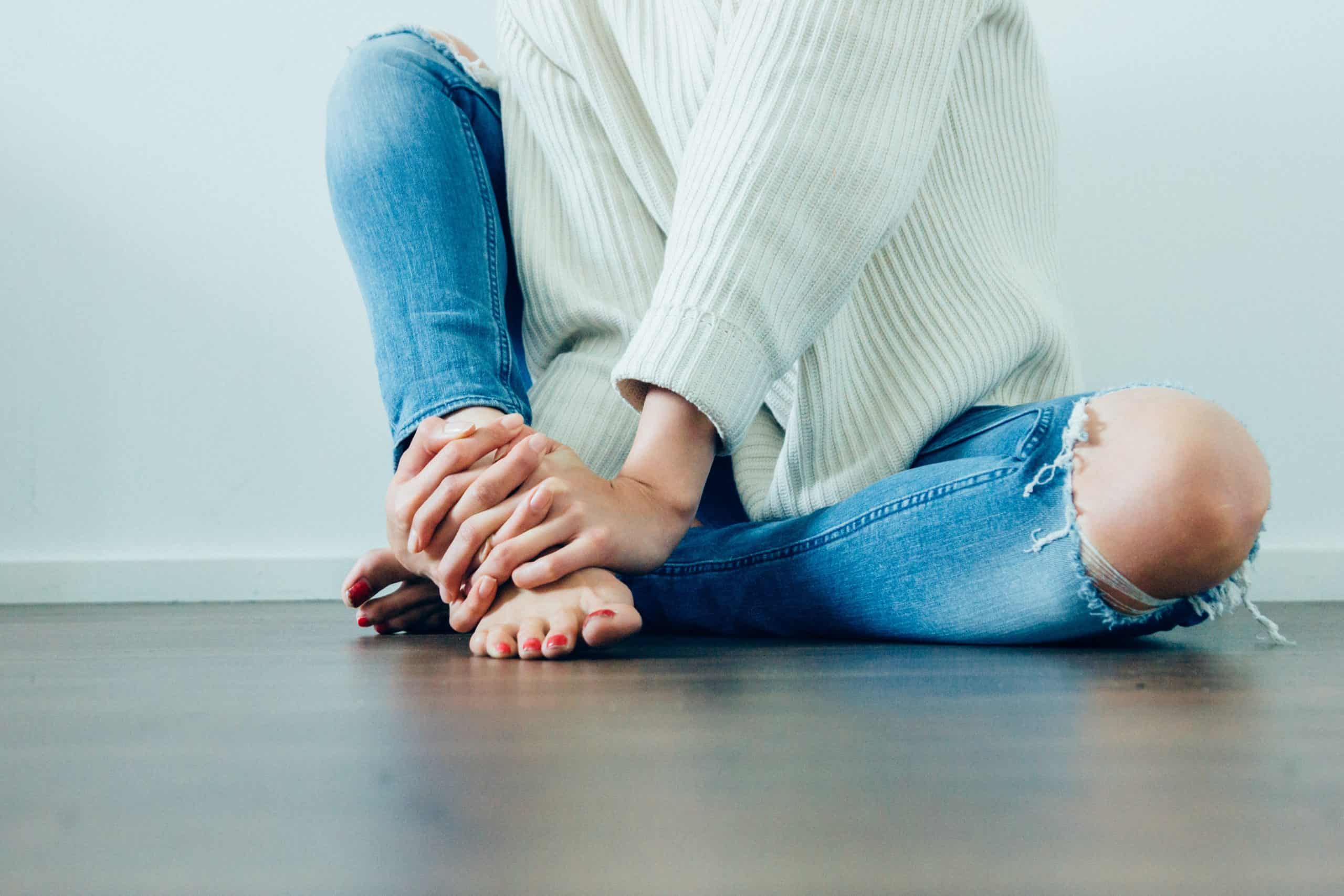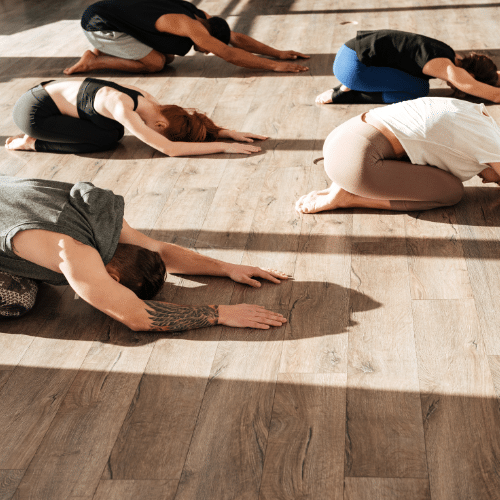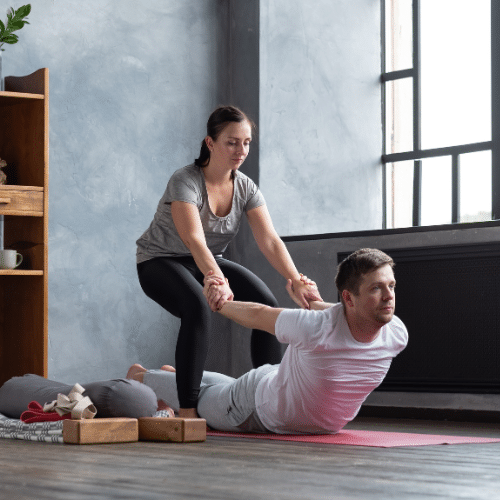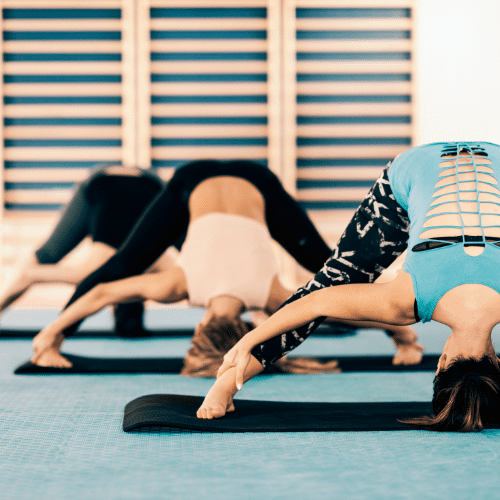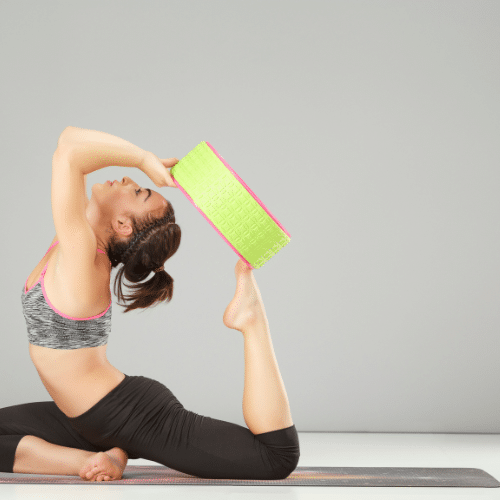Knee pain doesn’t choose backgrounds, athletic pasts, activity levels, or body types. Anyone who stands, walks, and sits will still feel a sharp sensation in the knee at some point. When this happens, even the most basic tasks can be more challenging. Pain medications work, but overusing pain medications for a prolonged period of time can be dangerous. If you’re looking for a non-pharmacologic way of management, yoga for knee pain is just as effective as pain medication without any of the worrying side effects.
Yoga is extremely calming and it’s excellent for managing pain, including joint pain. With this in mind, it’s surprising that few people think of yoga when seeking to address joint pain.
We at Zuda Yoga believe in the healing power of yoga poses for knee pain. We will discuss the benefits of using yoga for knee pain and walk you through some of the best yoga poses for knee pain relief.
The Most Common Causes of Knee Pain
Knee pain is one of the most common joint complaints on the planet — in fact, one in four American adults will deal with severe knee pain or have dealt with it in the past. Knee pain is this common because of the widespread nature of its causes.
Here are some of the most common factors that can give someone a predisposition to knee pain:
Collapsed Arches from Soft Shoes
Running shoes or trainers have become necessary to modern life. Without a doubt, the cushion provided by running shoes or trainers provides impeccable comfort. In some cases, these shoes even prevent injuries, especially among runners or other endurance athletes.
Ironically, this is also why more people are experiencing knee pain. When feet become too comfortable with the cushion of running shoes, their arches can collapse. Oftentimes, the collapse happens at an angle that many people can tolerate. However, when this goes on long enough, it puts pressure on the medial collateral ligament and the medial meniscus, which are the structures of the inner aspects of the knee. This causes the knees to internally rotate, which leads to a build-up of tension in the collateral and medial ligaments; this causes quite a bit of pain.
Poor Ankle Flexibility
The ankles are ball-and-socket joints that allow the feet to move at certain angles while walking and climbing. Throughout the day, the feet assume two positions — dorsiflexion and plantar flexion. Dorsiflexion is when the toes move upward. It occurs during long walks and climbs, which are two activities that people do less these days. The ankles need to be very mobile for the feet to assume the two main positions, especially dorsiflexion. However, chronic inactivity causes the ankles to be stiff.
So, what does this have to do with the knees? Well, when ankles are not mobile, knees have to compensate with a wider range of motion than is natural, since the ankles are not providing their own. The knees compensate by protruding forward during steps. As a person walks, the balls of the feet make contact with the ground, causing the knees to protrude. This causes a buildup of tension in the knee, since the natural human step starts with the heel making contact with the ground. In short, poor ankle mobility causes the knee to bear more weight than it’s supposed to — and at a compromising angle, at that. This causes lingering pain over time.
Poor Weight Management
The knees are weight-bearing joints. While the knees are resilient, there’s a limit to how much weight they can bear. The maximum weight varies from person to person, but one thing is for sure: being heavy predisposes a person to developing knee pain.
When a person is heavier than their knees can handle, this can cause friction along the lateral and medial meniscus even in the presence of synovial fluid. With friction increasing because of the mechanical load, the synovial fluid’s lubrication becomes insufficient. As a result, inflammation builds in the knees. As we all know, with inflammation comes pain.
Limited Range of Hip Motion
The hips can also determine whether or not a person suffers from knee pain. The hips are the main hinges for leg movement; the more mobile a person’s hips are, the better the range of motion of the joints below. This includes the knees.
If the hips are stiff, the legs tend to move in a repeated manner during movements like walking and running. This isn’t a problem, per se. However, when the knee chronically moves in the same manners, overuse injuries tend to occur. To prevent overuse injuries, one of two things needs to happen: either the person eliminates the movement that triggers pain or they improve the range of motion in other major joints, like the hips. The latter is the more influential option, as it eliminates the pain at the source instead of working around the source.
A wider range of motion in the hips is one of the biggest benefits of yoga poses for knee pain.
The Benefits of Yoga for Knee Pain
Yoga can address knee pain in two ways: first, it improves the range of motion of other joints that affect the knee, and second, it strengthens the knee in a low-impact manner.
These two major benefits lead to an array of other benefits, as well. These include, but are not limited to:
Improved Circulation
Yoga poses for knee pain improve circulation to the muscles surrounding the knees. Here’s how:
Circulation improves when blood vessels dilate. Dilation of blood vessels is the result of slower breathing and mindful muscle contraction — everything order Ivermectin online that yogis do. Improvements in circulation hasten the recovery of injuries. Improved circulation also delivers nutrients and oxygen to tissues, causing them to grow stronger and more resilient.
Improved Range of Motion
As mentioned earlier, one of the most common causes of knee pain is poor hip and ankle mobility. Yoga for knees involves poses that stretch the hip muscles like the abductors and hip flexors. The poses in yoga also encourage feet to assume the dorsiflexion position, encouraging foot mobility and reducing daily knee strain.
Poses like bends, bridges, lunges, and more will loosen up the hip flexors and ankles. The result of this is better mobility in the hips and ankles, resulting in less strain on the knees. The reduced need for compensation eliminates undue pressure, and, of course, pain.
Strength Training Without Impact or Shearing Force
Resilience in the joints and muscles can make the knees less susceptible to pain and injuries. One of the most common ways to strengthen the knees is with squats or any of their variations. However, squatting isn’t always a viable option due to the impact and load that it places on the knees. Squatting is also daunting for someone who is already experiencing knee pain.
Yoga, on the other hand, allows yogis to strengthen their joints with minimal impact and risk. The tension is the result of isometric loading. In other words, the yogi performs a pose and holds it, allowing tension to build. The isometric tension creates the same stimulus as lifting a weight, and it leads to improved density in the muscles and tissues surrounding the knees.
Improved Foot Stability
As we discussed before, instability in the feet can cause the knees to internally rotate, which is a huge culprit of knee pain. With yoga, however, the feet are often flat on the floor, which trains the feet to maintain full contact and increases overall foot stability.
Improved foot stability aso encourages the arches to maintain their curvature, which prevents them from caving in and causing the knees to internally rotate. When the feet are stable, the knees follow suit. This results in less knee pain over time.
Decreased Strain on the Knees
Especially with overweight individuals, any added pressure will cause knee pain. This is due to the weight the knees have to support. Luckily, yoga allows overweight individuals to alleviate pressure on the knees while improving their knee health at the same time.
Many yoga poses for knee pain don’t involve adding strain to the knees. The perfect example of this is the classic Camel Pose, which we’ll talk about later.
The Camel Pose involves minimal loading on the knee. As the yogi bends backward, the joints of the knees go in opposite directions. As a result, the pressure in the knee joints dissipates, bringing relief to the person performing the pose.
Yoga Poses for Knee Pain
In this section, we’ll cover two types of poses. Some poses will be for strengthening the areas around the knees, while others will directly address the knee pain.
Let’s start with one of the most popular knee-friendly poses for bulletproofing knees:
The Peaceful Warrior Pose
This is a lunge variation. To perform the Peaceful Warrior Pose, simply lunge forward until the front knee bends at a 90-degree angle. The rear leg should be straight. Do not go lower.
Point the toes of the rear foot outward for balance. Then stretch your arms upward and hold the pose for at least 30 seconds.
The Peaceful Warrior Pose stretches the hip flexors and creates isometric tension on the front knee. In short, yogis get a double whammy of knee benefits when performing this pose.
The High Lunge
The High Lunge is a regression of the Peaceful Warrior Pose. It’s for yogis who haven’t developed the hip flexibility to keep the rear leg straight during the lunge.
In execution, the only difference between the High Lunge and the Peaceful Warrior Pose is that the rear leg can bend in this pose. While this might seem less beneficial, it’s better for developing stability in the front foot and knee.
Half Sitting Pose (AKA the Chair Pose)
Other yogis refer to this pose as the Half Squat Pose because that’s exactly how it looks. To perform this pose, begin by standing erect and raising the arms. While holding the arms high, move the hips back and perform a half-squat.
The mechanical tension that builds in the quadriceps will strengthen the surrounding structures of the knee. Since the hips bear most of the weight in this position, there will be minimal pressure on the knees.
Bridge Pose
This pose is for those who already suffer from knee pain. Begin by lying flat on the floor, and then bring the feet as close to the hamstrings as possible. Push the hips up with both feet on the floor and hold the pose.
The Bridge Pose activates the gluteal muscles and relaxes the hip flexors. The activation of the gluteal muscles is crucial to preventing hip pain since this is where the iliotibial band (IT) is. This band is an elongated collection of connective tissue that links the knees to the glutes.
The less activated the glutes are, the more the IT band grows stiff, and a stiff IT band worsens knee pain.
Camel Pose
The Camel Pose is both simple and effective. However, for this position, a yoga mat is a must.
The Camel Pose begins with the yogi’s knees on the mat or floor. From here, they must bend backward slowly. Beginners can bend until their hands reach their calves, while more advanced practitioners can bend down to the floor.
The magic of the Camel Pose lies in its ability to decompress the knee. While bending, the knees are pulled in opposite directions, relieving the pressure that causes pain.
Struggling With Knee Pain? Try Yoga at Zuda Yoga
When your knees are bothering you, yoga can be an excellent way to manage pain and strengthen your knees. If you’re looking for a place to alleviate pain and stress through yoga, we’re a stone’s throw from you in Folsom and Rocklin.
Bend and lunge your pain and worries away with a supportive community of yogis at Zuda Yoga.


